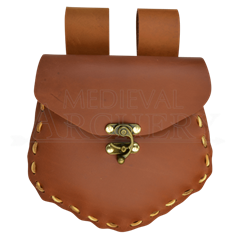The choice of materials for pouches is a critical aspect of pouch design, as it directly impacts the functionality, durability, safety, and appearance of the pouch. The science of pouch materials involves understanding the properties of various materials and selecting the most suitable ones for specific applications. Here are some key considerations related to the science of pouch materials:
- Material Types:
- Pouches can be made from a wide range of materials, including textiles (such as cotton, canvas, and nylon), plastics (like polyethylene, polypropylene, and PVC), metals (like aluminum), leather, paper, and composites. The choice of material depends on the intended use and desired characteristics.
- Strength and Durability:
- Pouches need to withstand the stresses and wear and tear they’ll be subjected to. The tensile strength, tear resistance, and abrasion resistance of the chosen material are crucial factors in determining its durability.
- Flexibility and Rigidity:
- Some applications require flexible pouches that can conform to the shape of their contents, while others may need rigid or semi-rigid materials to protect delicate items or maintain a specific form.
- Water Resistance and Waterproofing:
- For outdoor and wet environments, pouches need to resist moisture and water penetration. Materials may be chosen for their inherent waterproof properties or treated with coatings to enhance water resistance.
- Chemical Compatibility:
- Consider the compatibility of the material with the contents of the pouch. Some chemicals, such as solvents, can degrade certain materials, leading to leakage or contamination.
- Thermal Properties:
- Pouch materials should have appropriate thermal properties for the intended use. For example, insulated materials may be required for pouches used to carry hot or cold items.
- UV Resistance:
- Materials used in outdoor applications should be UV-resistant to prevent degradation and fading from prolonged sun exposure.
- Barrier Properties:
- Depending on the contents, pouches may need to provide a barrier against oxygen, moisture, light, or other environmental factors to maintain product freshness and integrity.
- Biocompatibility and Food Safety:
- Pouches used for food, pharmaceuticals, or medical applications must meet safety and regulatory standards to ensure they do not contaminate the contents.
- Aesthetics and Branding:
- The appearance of pouch materials, including color, texture, and printability, can play a significant role in branding and marketing.
- Recyclability and Environmental Impact:
- Sustainable materials and pouch designs that minimize environmental impact are becoming increasingly important. Consider the recyclability, biodegradability, and overall eco-friendliness of materials.
- Cost and Availability:
- Material costs, availability, and production processes can influence the feasibility of using specific materials for pouch manufacturing.
- Sealing Compatibility:
- The chosen material should be compatible with the sealing method used to close the pouch, whether it’s heat sealing, ziplock, adhesive, or another type.
- Testing and Quality Control:
- Pouch manufacturers often subject materials to rigorous testing to ensure they meet the required quality and safety standards. This may include tests for strength, barrier properties, and chemical resistance.
- Innovation and Advances:
- Advances in materials science and technology continually lead to the development of new materials with enhanced properties, such as lightweight yet strong composites, smart materials, and sustainable alternatives.
The science of pouch materials is a multidisciplinary field that draws on materials science, engineering, chemistry, and manufacturing processes to create pouches tailored to specific needs and applications. The selection of the right materials is crucial to achieving the desired performance and functionality of pouches in various industries and use cases.




















